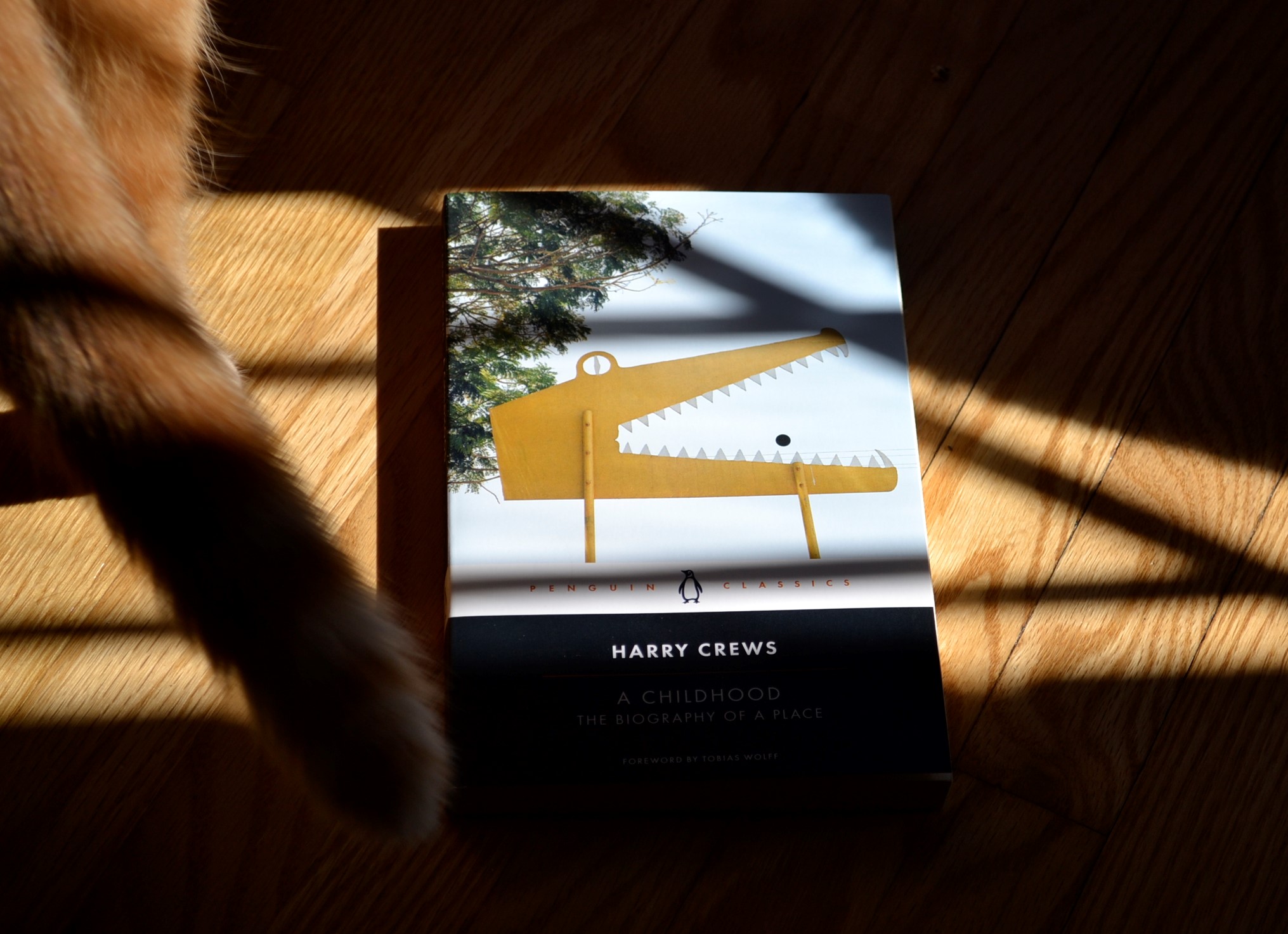Read-a-thon!
The good news is that last week, I finished a whole ton of books! The bad news? I finished that ton of books because of my lovely spouse’s latest deadline for a manuscript evaluation. Reading until I barf is something that I often crave — especially when I’m feeling upset or stressed. However, sometimes it’s like when you’re a little kid and overdose on your favourite Halloween candy. I love books, but my concentration cannot outlast my desire to keep reading and make sure that my lovely spouse has a quiet environment to get through her work crunch — much like sometimes your stomach protests more chocolate before your taste buds do.
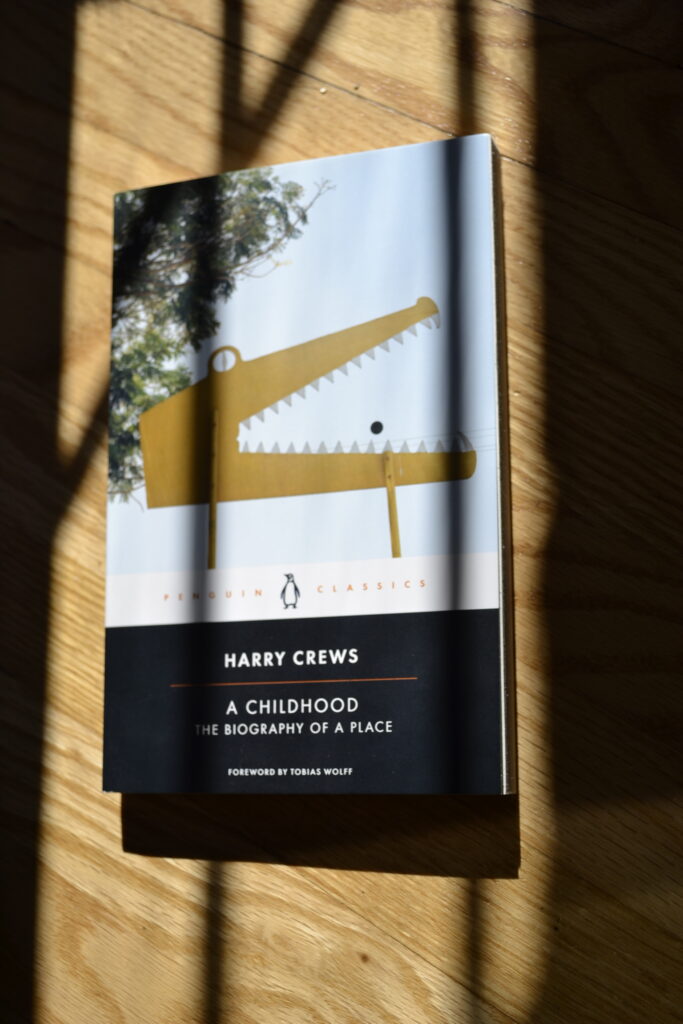
I’m making sure that we both take breaks when we need them, and hopefully the read-a-thon takes on a bit less of an all-day quality than it has for the last two days. The cats see no signs of lack of enjoyment since there’s always a lap to spread out onto and we’re sitting still for hours at a time.
The Art of Memoir
Memoir can be a tricky place in the world of literature. When it’s done well, it had a resonance that cannot be imitated and an authenticity that has a unique power to touch readers. Harry Crews’ A Childhood: The Biography of a Place is the cream of the crop according to multiple sources. I found the memoir through a recent article in the New Yorker examining Crews’ work and specifically his memoir work and how it compares to his fiction.
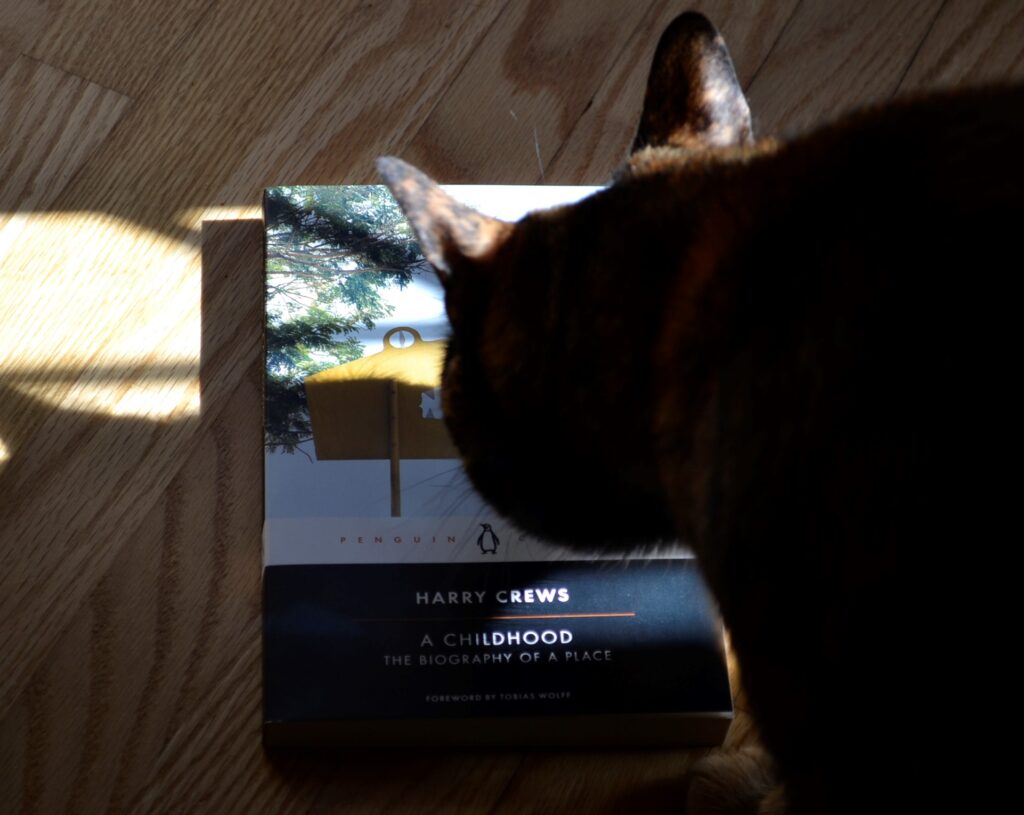
What makes A Childhood stand out is partially Crews’ bold writing style. He doesn’t mince words and he’s honest about what he’s looking to accomplish by writing this book. He wants to examine not just his childhood, but the geography of where he grew up and the stories he grew up with from the people who surrounded him. It’s about more than Crews individually; instead, it’s about the greater community of sharecroppers in Bacon County and the time in which he was born. There’s also the absence and legend of his father that the author contends with both throughout the book and beyond it.

A Childhood isn’t long in terms of page count, but it reads in a way that’s even faster than that. You could easily finish this book in a day or an extended evening reading session. The writing definitely compels you to at least want to do that.
The Role of Stories
What I connected most to in this memoir was Crews’ description of the stories that defined his childhood and formed part of the lens through which he saw the world. He details stories that float around the county, amongst the men working the fields, and also the stories that women trade while they sew around the dining room table and children play around their feet. Those stories mark time. They are shared county history. They define the place that the author grew up in.
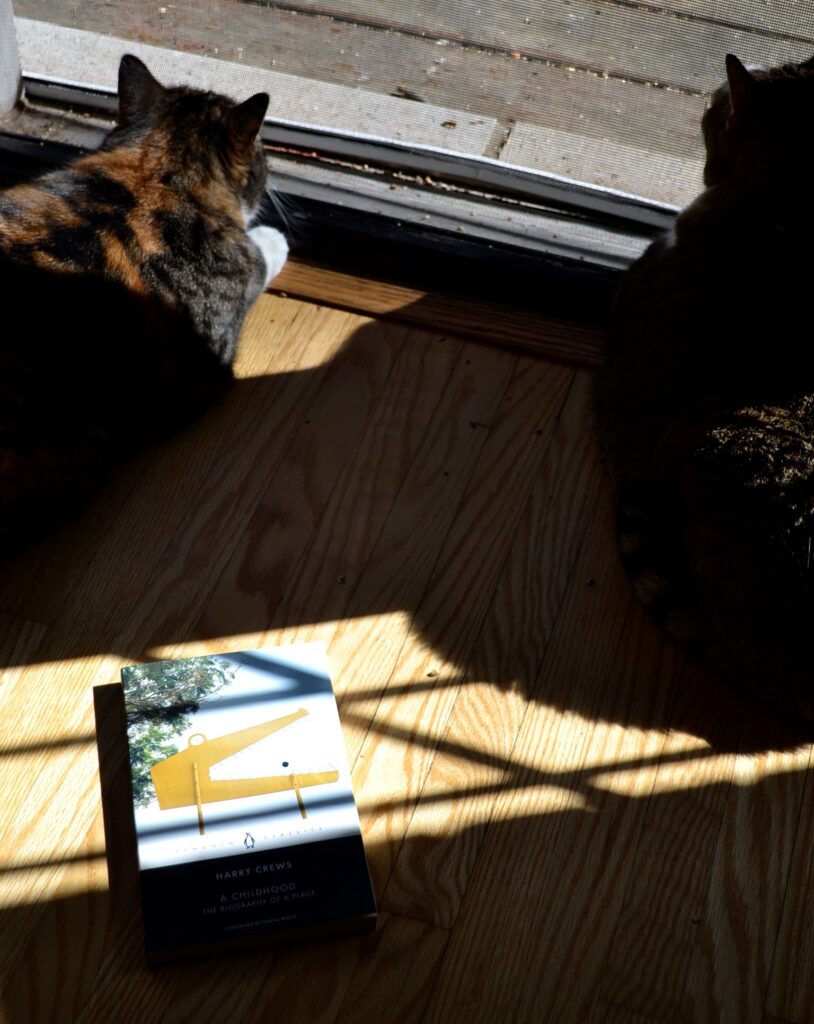
I had a similar experience with my family. The stories that my grandmother would tell after family dinners as everyone was sitting around the remains of a birthday cake or a pumpkin pie are what I think of when I think of growing up. They’re how I remember cousins, great aunts, great uncles, my grandmother, and my grandfather. I share those stories with my spouse and it feels like I’m sharing that childhood with her. A piece of the place that I grew up in.
What Home Is
Throughout the book, Crews is searching for what home is and if he can ever go back there — eventually coming to the conclusion that, when he left, he left everything behind forever. Partly because his family moved quite a bit and left behind a lot of physical places. Partly because of his family situation, he expresses the feeling that an essential anchor is missing in his life.
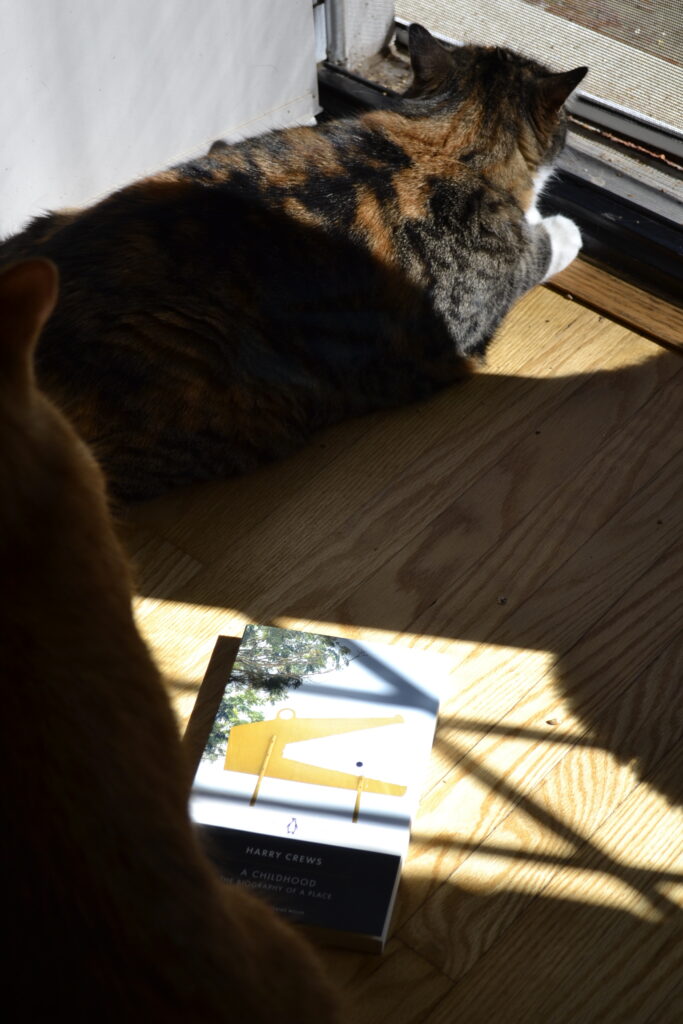
The memoir effectively conveys the idea that home — though it is very tied to a place — is also more than a place. It’s people, stories, a time, a moment. And it’s also precious. Something to be cherished and carried with you wherever you end up.
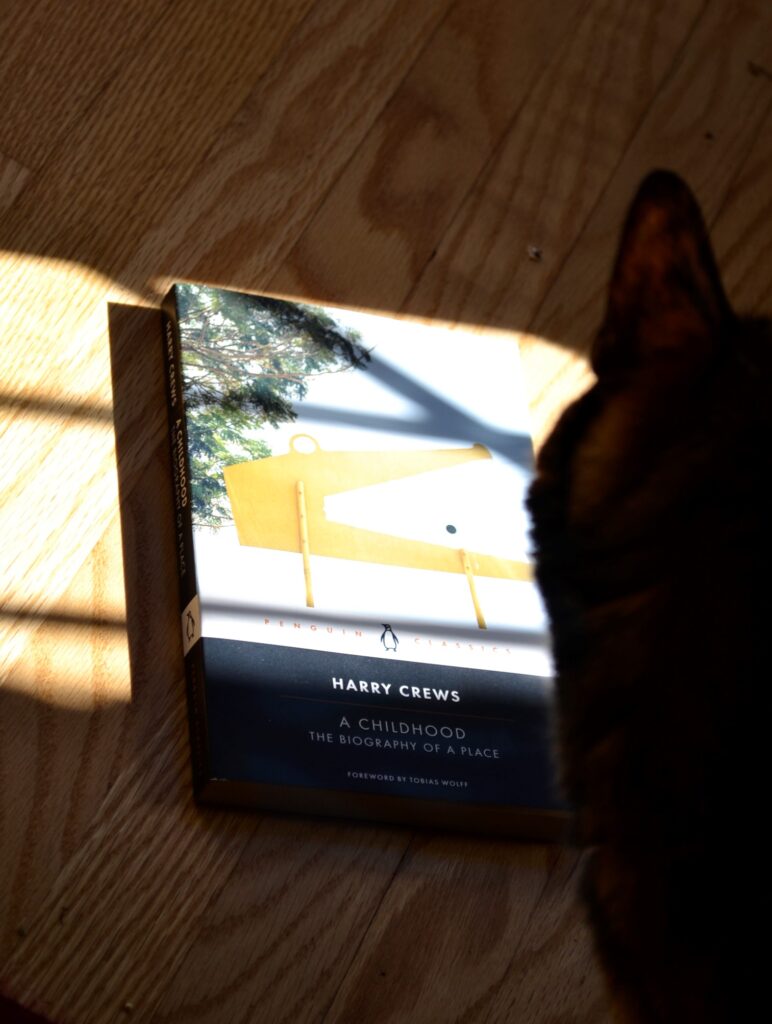
Before I wrap up the review, I should offer a bit of a content warning. There is violence, sexuality, and ideas that are very much relics of the past and the time that Crews is describing.
How Long Can the Read-a-thon Last?
The deadline is the day that this post is published, and so the read-a-thon should definitely be over. The consequence of so much reading packed into so few days can sometimes bring on a reading slump which is never something that I want to experience.
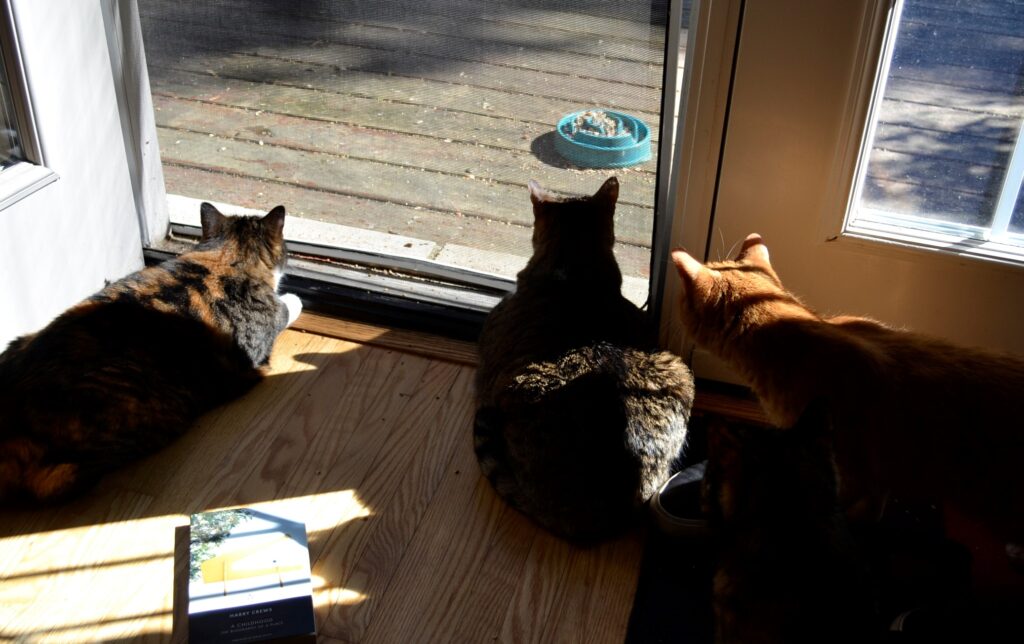
Usually a day of some films and some time enjoying the outdoors, giving my eyes a rest, is enough to kind of give my concentration a chance to reset and get ready for the next pile of books from the stacks.
